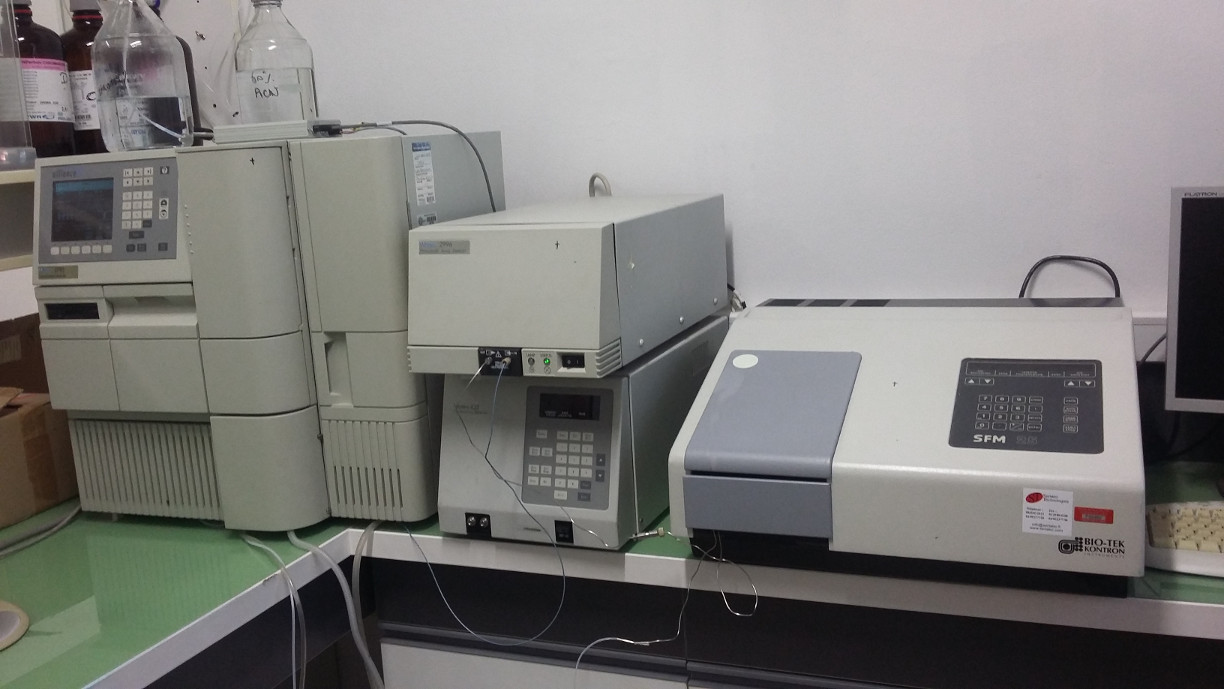Biomolecules Platform

Functional genomic approaches and the rise in the integrative biology in microorganisms lead to increase knowledge in analytical chemistry. The aim of the Biomolecule Platform is to develop news methods to isolate and quantify metabolites by HPLC (High Pressure Liquid Chromatography).
The HPLC apparatus is made of a quaternary pump (Waters Alliance 2795) and molecules are detected using either a diode array detector Waters 2996, or by fluorescence with a SFM25 (Kontron), and by conductivity (Waters 432). Data acquisition is perform using MassLink. For example, various metabolites were characterize:
• Using probes, we followed the kinetic of KDG (2-keto-3-deoxygluconate), cAMP (cyclic adenosine monophosphate) accumulation in bacteria linked to the induction of expression of the pel gene. Target metabolites signature was determinant for approaches aiming modelisation of pectine lyases factors expression in the infection process of Dickeya dadantii (Systems Biology in coll. with the CRP team).
• Organic acid quantitation such oxalic acid (FGPF) was performed using HPL in a mutant of the pH signaling pathway, and in soils bacteria metabolizing this acid (M2E).
• Citric, lactic, acetic and succinic acids were followed in a microbiome project in collaboration with the University of Abidjan (UFR BioSciences, CRP and SAMY) on cocoa beans fermentation to yield chocolate.
• Indole, a signal molecule in bacteria was perform by developing a colorimetric method, with respect to traditional method by HPLC with UV/fluorescence detection (MTSB).
• The platform perform also amino acids, thiols quantitation using appropriate probes as well as secondary metabolites. When needed characterization of the molecules structure is realize in collaboration with the CESN platform of the Microbiology Ecology Laboratory.

